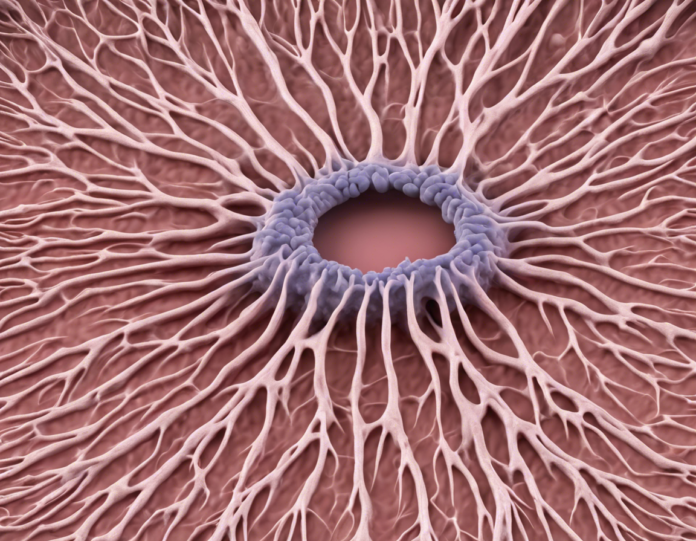Introduction
The Graafian follicle, also known as a mature ovarian follicle, plays a crucial role in the process of ovulation and the menstrual cycle in women. Understanding the structure and function of the Graafian follicle is essential in comprehending the intricate mechanisms that regulate female reproductive health. In this article, we will delve into the details of the Graafian follicle, its development, structure, and significance in the female reproductive system.
The Development of the Graafian Follicle
The development of the Graafian follicle, a key component of the ovarian cycle, begins with the recruitment of primordial follicles from the pool of resting follicles in the ovaries. These primordial follicles undergo a series of developmental stages, including primary, secondary, and antral follicle stages, before maturing into a Graafian follicle.
Structure of the Graafian Follicle
The Graafian follicle is characterized by its unique structure, which consists of several distinct layers that surround the oocyte. These layers include:
-
Theca Cells: The theca cells are located on the outer layer of the Graafian follicle and are further divided into two subtypes: theca interna and theca externa. The theca interna plays a critical role in producing androgen hormones, which are essential for the development of the follicle. On the other hand, the theca externa provides structural support to the follicle.
-
Granulosa Cells: The granulosa cells line the interior of the Graafian follicle and are involved in nurturing the developing oocyte. These cells play a vital role in producing estrogen, a key hormone in the regulation of the menstrual cycle.
-
Antrum: The antrum is a fluid-filled cavity that forms within the Graafian follicle and provides a protective environment for the oocyte. The fluid within the antrum contains various nutrients and signaling molecules essential for the growth and maturation of the oocyte.
-
Corona Radiata: The corona radiata is a layer of granulosa cells that surrounds the oocyte and plays a crucial role in supporting the oocyte during ovulation.
Function of the Graafian Follicle
The Graafian follicle serves several important functions in the female reproductive system, including:
-
Ovulation: The Graafian follicle is responsible for releasing a mature oocyte during ovulation, which is essential for fertilization to occur.
-
Hormone Production: The granulosa and theca cells within the Graafian follicle produce hormones such as estrogen and progesterone, which play key roles in regulating the menstrual cycle and maintaining the uterine lining.
-
Supporting Oocyte Development: The Graafian follicle provides a nurturing environment for the developing oocyte, supplying it with essential nutrients and growth factors necessary for maturation.
Significance of the Graafian Follicle
The Graafian follicle is of paramount importance in female reproductive health and fertility. Its proper development and function are crucial for the successful maturation and release of oocytes, which are essential for conception. Disorders or abnormalities in the development of the Graafian follicle can result in infertility, menstrual irregularities, and other reproductive health issues.
FAQs about the Graafian Follicle
-
What triggers the development of the Graafian follicle?
The development of the Graafian follicle is initiated by the follicle-stimulating hormone (FSH) released by the pituitary gland. -
How does the Graafian follicle release the oocyte during ovulation?
The surge in luteinizing hormone (LH) triggers the release of the mature oocyte from the Graafian follicle. -
What happens to the Graafian follicle after ovulation?
After ovulation, the Graafian follicle transforms into the corpus luteum, which secretes progesterone to prepare the uterine lining for potential implantation. -
Can abnormalities in the Graafian follicle lead to infertility?
Yes, abnormalities in the development or function of the Graafian follicle can significantly impact fertility by interfering with ovulation and oocyte maturation. -
Are there any medical treatments available for conditions affecting the Graafian follicle?
Depending on the underlying cause, treatments such as hormonal therapies or assisted reproductive technologies may be recommended to address issues related to Graafian follicle development and function.
In conclusion, the Graafian follicle serves as a crucial component of the female reproductive system, playing essential roles in ovulation, hormone production, and supporting oocyte development. Understanding the structure and function of the Graafian follicle is vital for comprehending the complex processes involved in female fertility and reproductive health. By shedding light on this intricate aspect of human physiology, we gain a deeper appreciation for the remarkable mechanisms that govern the miracle of life.

